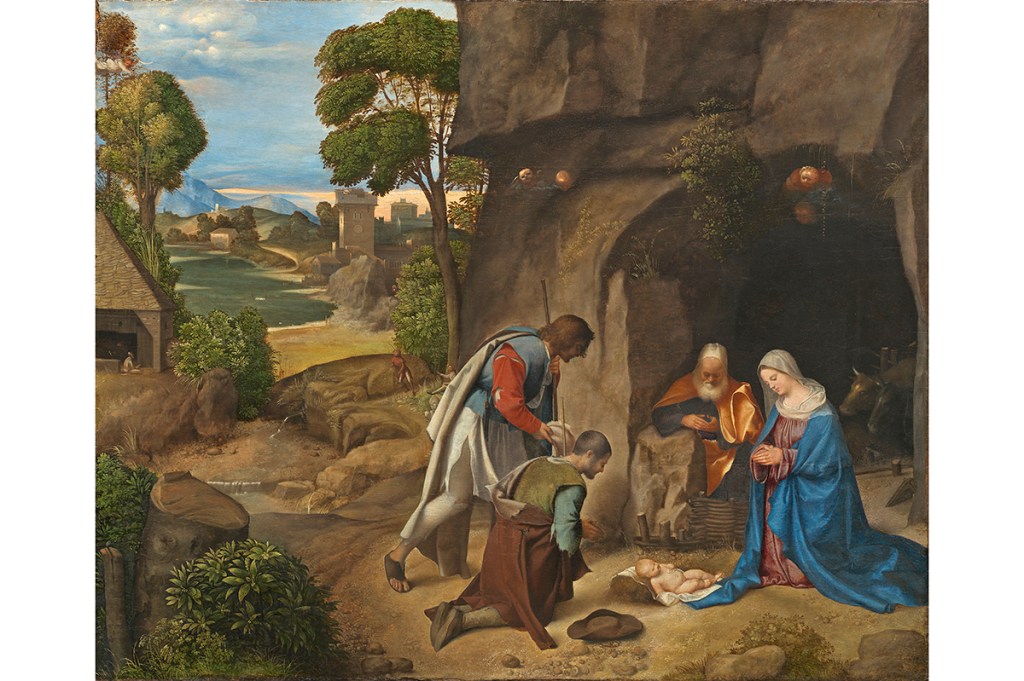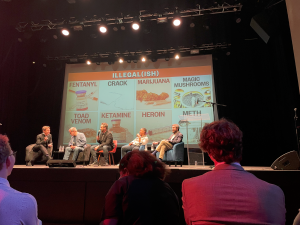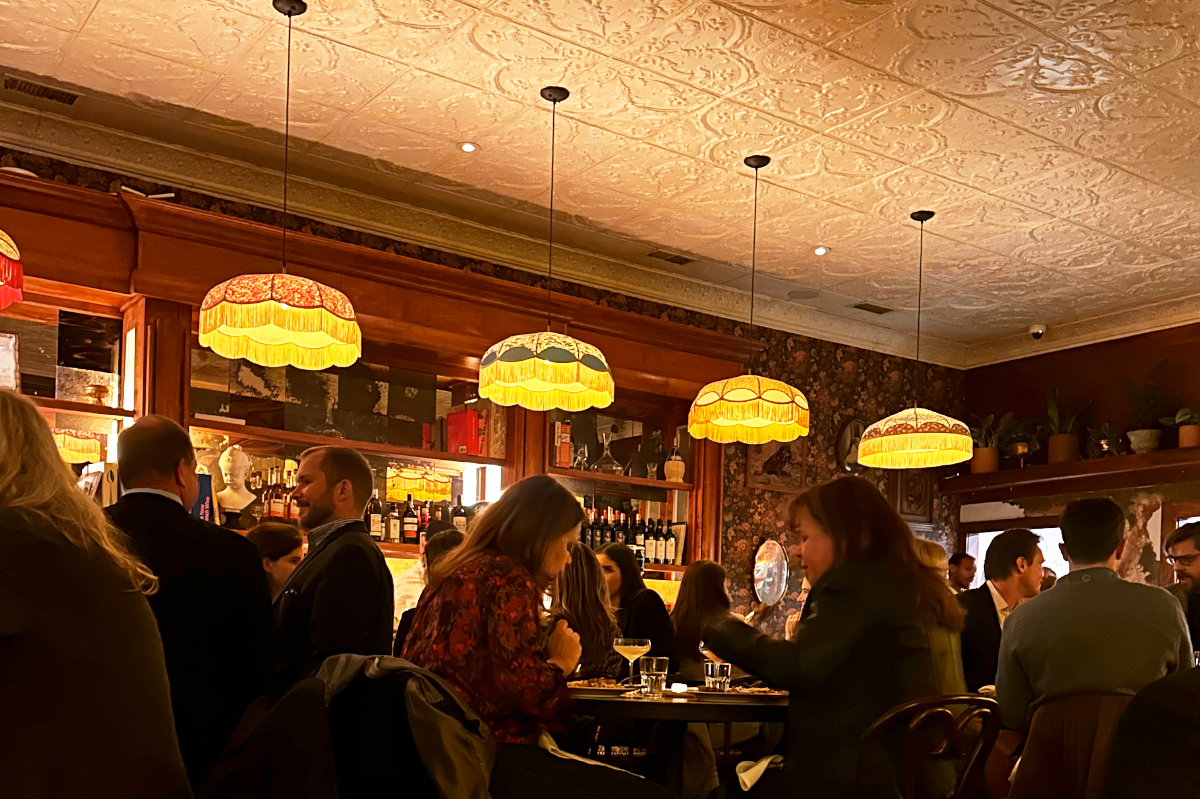On October 25, 1510 Isabella d’Este, the Marchioness of Mantua, wrote a letter to her agent in Venice inquiring after a certain highly collectable item. “We believe that in the effects and the estate of Zorzo da Castelfranco, the painter, there exists a painting of a night scene, very beautiful and unusual.”
She thus set off one of the great whodunnits of art history: a mystery hidden inside an enigma that caused a furious twentieth-century quarrel between one of the greatest connoisseurs of Renaissance art and the most powerful dealer of the age — and which has never been definitively solved.
It concerns a beautiful picture, now in the National Gallery of Art, Washington DC, and the artist who may or may not have painted it: Giorgione of Castelfranco — just George, “Zorzo, ‘to Isabella — who had died recently of the plague. This is still sometimes known as the Allendale Nativity because it was once owned by the Allendale family of Bretton Hall in Yorkshire, northern England.
When in 1937 the art dealer Joseph Duveen bought it from them, planning to sell it to an American millionaire, Paul Mellon, the renowned art historian Bernard Berenson was instructed to attribute it to Giorgione. Despite the fact that Berenson owed his palatial villa outside Florence and grand style of life to Duveen’s lavish fees, “BB” refused. “It would be utterly below his self-respect,” he furiously responded, “let alone his dignity, to be kept as a pet, and not as an unquestioned authority.’
One thing is certain: the picture depicts the Adoration of the Shepherds, an event described in the Gospel of St Luke 2: 8-15. In the countryside near Bethlehem there were some “shepherds abiding in the field, keeping watch over their flock by night,” when an angel appeared from the darkness and uttered the words: “Unto you is born this day in the city of David a Savior, which is Christ the Lord.”
After the angel had departed, the shepherds went in search of the Child and found him just as foretold, “wrapped in swaddling clothes, lying in a manger” with Mary and Joseph — a scene familiar from innumerable paintings, cribs and Christmas cards. When we look at this version, however, it is immediately obvious that the artist has done something radical.
The adoring shepherds and Holy Family have been de-centered. They are still prominent, but they have all been shifted to the right. The other half is taken up by a beautiful and expansive prospect with blue distant mountains, a meandering river, various towering buildings and some rustics, like characters from Virgil’s Eclogues, chatting under the shade of a tree.
Kenneth Clark once wrote a book called Landscape into Art, describing the way that pictures of scenery became a standalone theme in western painting. It’s a story in which Giorgione and his Venetian contemporaries play an important part. Here you can see it happening before your eyes. As if on a revolving stage, the sacred tableau has moved sideways to reveal a vista that brings Claude, Turner and Constable to mind.
This picture was never placed on an altar. It’s too small, and obviously intended to be savored in close-up detail. The viewer is expected to appreciate not only a magnificent prospect resembling the foothills of the Dolomites, but also such subtleties as the wonderful softness of Joseph’s beard, the delicate shadows on his face and the way the yellow of his mantle sings out against the darkness of the cave behind. It’s a connoisseur’s piece, to be hung on a private wall. Whether its first owner appreciated it more as a work of art or the image of a sacred mystery is hard to say — probably a complicated mixture of the two.
Could this have been the “very beautiful and unusual” picture that Isabella, an avid acquirer of art, coveted in the fall of 1510? It was definitely prized by aficionados of what was then contemporary art. Isabella’s man on the spot replied that he had discovered two such paintings, both by Giorgione, but neither owner was “willing to sell at any price, for the reason that they wish to keep them for their own enjoyment.” Could the Allendale Nativity have been one of those?
Isabella called it “a night scene.” Could she have meant an Adoration of the Shepherds by that term? This is a controversial point. In Italy in later years the scene was often set at night and sometimes dubbed a “notte,” meaning “holy.” But perhaps not as early as 1510.
In any case, at what time of day is the picture set? It seems to be very early morning, with dawn still visible in the sky. This delicate glow is clearer in the second version, in the Kunsthistorisches Museum, Vienna, which may also be by Giorgione. In reply to Isabella’s inquiry, her agent reported that of the two such pictures he had traced one was “not as perfect” as the other. The Vienna painting is closely similar but looks unfinished.
Of course, according to the gospel it was the annunciation to the shepherds that took place at night. They then had to go to Bethlehem and find the Holy Family — so setting the Adoration at sunrise seems reasonable.
Venetian painters thought hard about such matters. Isabella d’Este once asked Giovanni Bellini to insert St Jerome into a Nativity he was painting for her, but Bellini ‘would not hear of it” (quite rightly, since that saint lived several centuries after the birth of Christ). On another occasion when she tried to tell Bellini what to paint, one of her advisers famously explained that “his way of working, as he says, is always to wander at will in his pictures.”
No doubt Giorgione felt much the same. In the succession of great Venetian painters, he was Bellini’s successor and the immediate predecessor of Titian. But everything else about him is hazy. He didn’t sign a single picture (though someone else wrote his name on the back of a couple). Not a word of his is recorded. And yet, or perhaps partly as a result, Giorgione and his works have often seemed to be the elusive essence of the Renaissance.
“Every critic,” Bernard Berenson wrote, “has their own private Giorgione” (I plead guilty too). Berenson himself certainly had strong opinions on the subject — particularly about this picture. In 1871, it was attributed to Giorgione by the great scholar Giovanni Cavalcaselle. Naturally, numerous others disagreed, Berenson especially vehemently. Eventually, he conceded it might be partly by that painter.
Nowadays, though still shadowy, Giorgione has grown a little clearer in outline. An inventory of the possessions he owned when he died, pitifully and poignantly on the island of the Lazzaretto Nuovo, the place where those who had been in contact with plague cases were sent. An inscription in a copy of Dante’s Divine Comedy found in an Australian library gives his date of death, September 17, 1510, and age: thirty-six.
As for the Allendale Nativity, few now would doubt he painted it and some (myself included) would go further and argue that this is the very picture that Isabella was in vain pursuit of half a millennium ago. In any case, it is a masterpiece in which you can see religious awe combined with sensuous pleasure in the beauty of the world. In other words, it is truly, deeply Christmassy.
This article was originally published in The Spectator’s UK magazine. Subscribe to the World edition here.
























